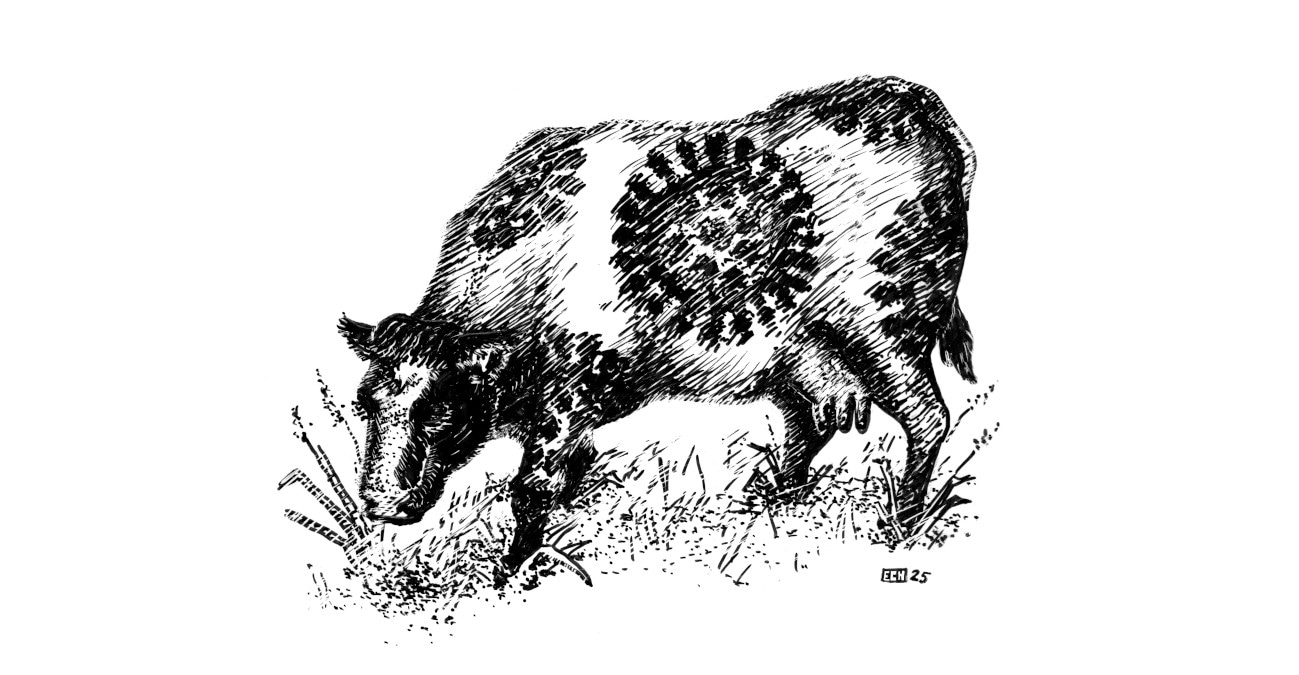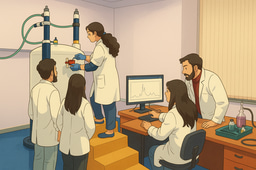When to Cry Over Spilt Milk
Published in Microbiology, Biomedical Research, and General & Internal Medicine

In late March of 2024, H5N1 avian influenza viruses were identified in the milk of dairy cattle in the USA, a startling result which raised urgent public health questions about the effectiveness of pasteurisation in protecting the public.
Here, the joint first authors and senior author of a collaborative study into this, first preprinted on 31st May 2024 and now published in Nature Communications, discuss their findings and explain how co-operation across UK research institutes made this work possible.
Joint first authors: J.S.: Jenna Schafers (Roslin Institute, University of Edinburgh), C.W.: Caroline Warren (Animal and Plant Health Agency); J.Y.: Jiayun Yang (Pirbright Institute); and J.Z.: Junsen Zhang (MRC-University of Glasgow Centre for Virus Research). Senior author E.H.: Ed Hutchinson (MRC-University of Glasgow Centre for Virus Research).
What was the study about?
J.Y.: In March 2024, the US Department of Agriculture confirmed the first cases of the H5N1 virus in dairy cattle across multiple states, including Texas, Kansas and Michigan. Having previously primarily affected wild birds and poultry, H5N1 influenza virus demonstrated an expanded host range by its unprecedented spread in cattle. The virus has now caused outbreaks in nearly 1000 dairy cattle farms in 16 states across the USA, although it has not yet been detected in cattle in other countries.
C.W.: H5N1 virus was found to replicate quickly in bovine mammary tissue and was present in milk from infected livestock at very high levels. How the virus would behave in milk, a highly complex and variable liquid matrix with multiple confounding issues, was unclear.
J.Z.: The rapid spread of H5N1 in dairy cattle raised concerns about food safety, especially whether pasteurisation remains effective. Given the unusual nature of this outbreak and the virus infecting a new host, it was important to test if commercial milk was still safe.
J.S.: Because influenza viruses appearing in milk was a new occurrence, the obvious question, about the efficiency of viral inactivation by pasteurisation of milk products, had not been definitively answered before.
How did you work together to address this?
J.Y.: UK academic and governmental research institutions, connected by the FluTrailMap and FluTrailMap-One Health research consortia (funded by the BBSRC, MRC and Defra), rapidly worked together to assess the validity of pasteurisation protocols under laboratory settings.
CW: At the Animal and Plant Health Agency [APHA; an executive agency of the UK government] we devised experiments to simulate pasteurisation times and temperatures using live H5N1 influenza virus within high containment laboratories designed specifically for this type of virus work.
J.S.: As a PhD student already investigating mechanisms of viral inactivation, particularly thermostability, the question of pasteurisation efficiency was a natural extension of my existing work. I had previously explored slightly lower temperatures, which allowed us to quickly adapt the same method for the higher temperatures, and avoid some of the pitfalls I’d already encountered along the way.
E.H.: Outside of the APHA’s high containment labs, we carried our more extensive testing of other, less dangerous influenza viruses under lower levels of biological containment. We used e-mail and Zoom calls to co-ordinate and compare our work across four different research institutions scattered across England and Scotland.
What were your main findings?
C.W.: This collaborative effort from our institutes showed that if commercial milk does contain H5N1 influenza virus, it can be rendered safe for consumption by following existing pasteurisation protocols.
E.H.: Although it’s reassuring that all the influenza viruses we tested were inactivated by pasteurisation, we did also confirm that influenza viruses remain infectious in unpasteurised milk. This highlights the ongoing risks of occupational exposure in dairies, and from the consumption of ‘raw’ milk, in areas where H5N1 is present in cattle.
What did you learn about collaborative work from this?
J.Y.: Our findings highlight the importance of collaborative research and a rapid scientific response in addressing emerging zoonotic threats.
C.W.: The partnership through our research consortia ensured that institutional technical expertise and targeted workflows were linked from the start, for harmonisation of approach and efficiency.
J.Z.: Collaboration was essential to overcome challenges such as rapidly accessing different virus strains and accessing in high-containment Specified Animal Pathogens Order (SAPO) level 4 labs. The consortia brought together researchers from different institutions, allowing for a broader understanding of the outbreak. For me, this has provided valuable learning opportunities, helping me gain deeper insights into influenza pandemics. As a PhD student new to academia, this experience has expanded my perspective and highlighted the importance of teamwork in addressing emerging infectious diseases.
J.S. At the start I was aware that I was not the only person considering this question, and there is a tendency for researchers to all jump on the same bandwagon! Fortunately, one of my supervisors was a member of these research consortia. Without the established relationships of the consortia, I’m not sure this collaboration would have been possible, or certainly not so rapidly. As it was, we were able to leverage the strengths of each institution and produce a better and more cohesive result than we could separately. I believe developing this kind of collaborative capacity is crucial. However, it requires some thought considering our existing systems around funding and promotion – a focus on publications and authorship means that some of the most important work lacks prestige and is thus neglected, such as replication studies or negative results. Can we find a better way to address this? Perhaps collaborations such as these are a good start.
E.H. I was really encouraged by how these research consortia allowed us to provide a rapid collaborative response to this urgent question. The UK is lucky to have an open and collaborative influenza research community, but formal research consortia like these make it so much easier to respond quickly. I think this project also highlights some of the benefits of changing publication practices in the biological sciences – joint first authorships and a CRediT taxonomy meant that the researchers who led the work at all four institutes could be properly credited for their efforts, while preprints meant that we could get our results out at a very early stage to help inform policy decisions, without compromising a later peer-reviewed version. Indeed, by the time we had been through the peer review process we were able to add a discussion section to this comparing our results, collected across four research institutes, to all the other studies that were subsequently published on this topic, eventually providing an even more convincing result!




Please sign in or register for FREE
If you are a registered user on Research Communities by Springer Nature, please sign in